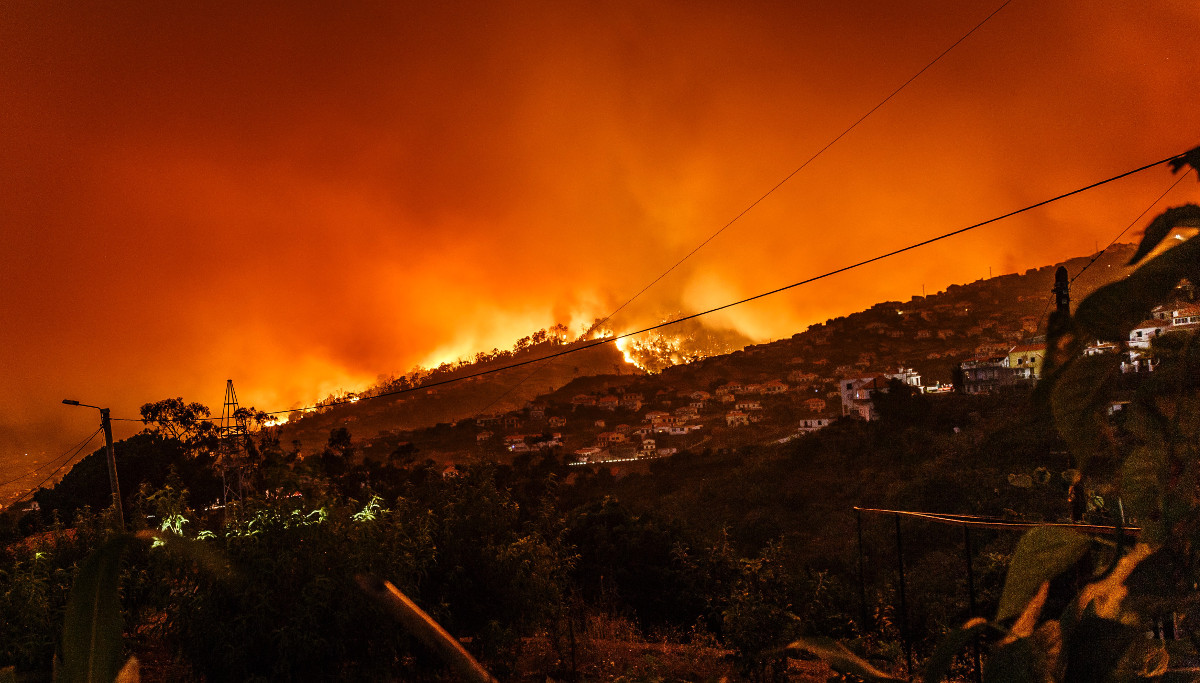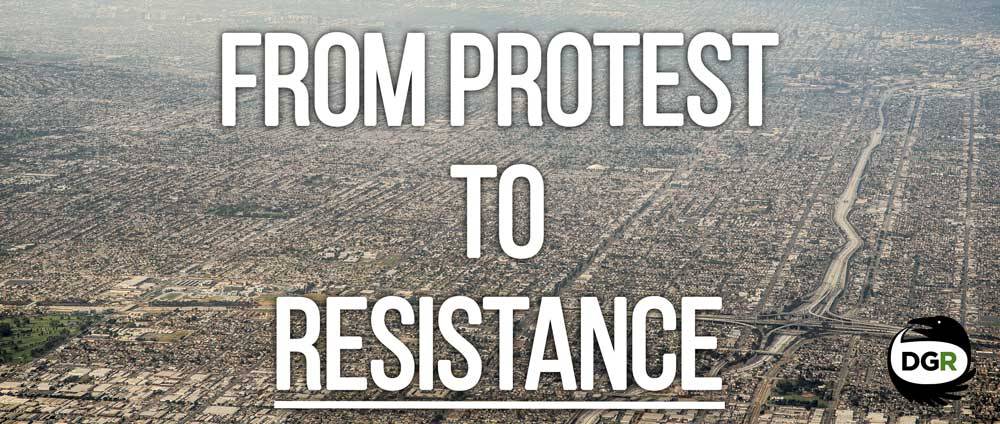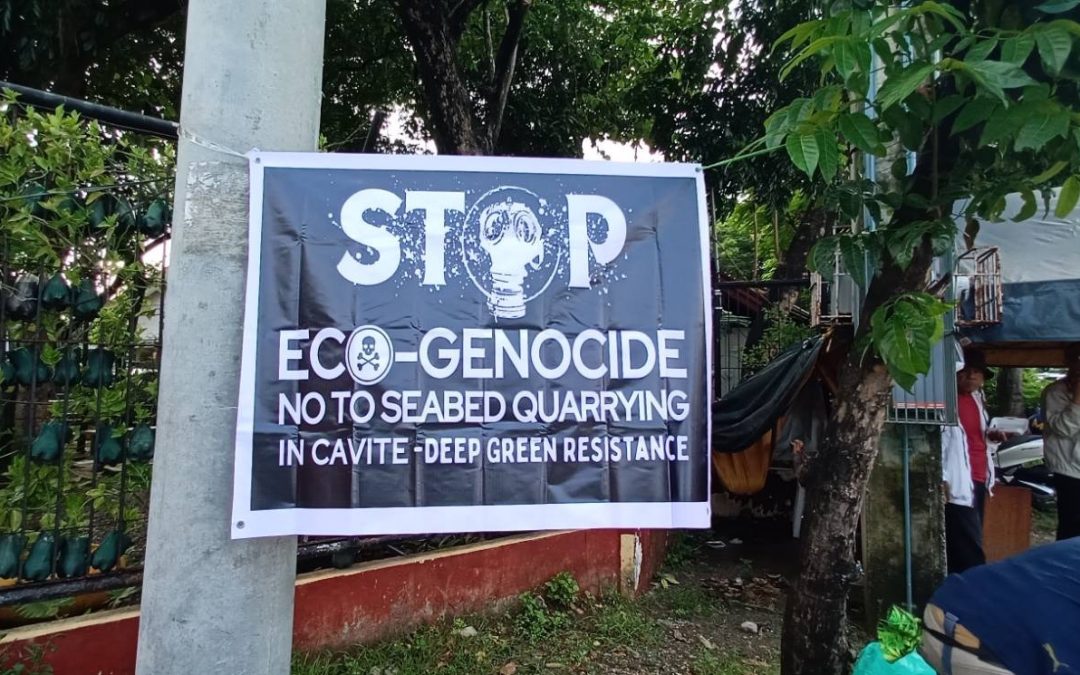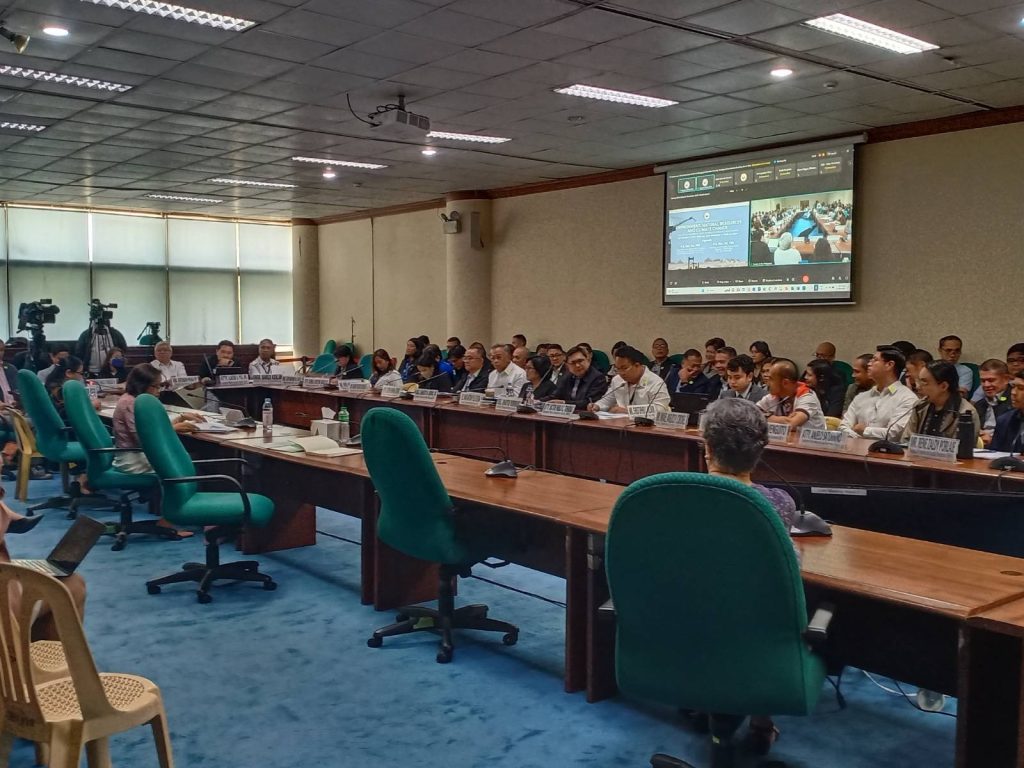
by DGR News Service | Oct 9, 2023 | Climate Change, NEWS
Editor’s Note: The impact of climate change has begun to impact the financial market. Insurance companies aim to make profit on risk coverage. However, if the risk for any sector runs too high, they tend not to invest in that. Nuclear reactors are a common example. Private insurance companies do not insure nuclear reactors as the associated risks are too high. With the rapidly increasing climate change, however, insurance in even the housing market has become too costly. The article describes this phenomenon.
By Tik Root/Grist
From California to Florida, homeowners have been facing a new climate reality: Insurance companies don’t want to cover their properties. According to a report released today, the problem will only get worse.
The nonprofit climate research firm First Street Foundation found that, while about 6.8 million properties nationwide already rely on expensive public insurance programs, that’s only a fraction of 39 million across the country that face similar conditions.
“There’s this climate insurance bubble out there,” said Jeremy Porter, the head of climate implications at First Street and a contributor to the report. “And you can quantify it.”
Each state regulates its insurance market, and some limit how much companies can raise rates in a given year. In California, for example, anything more than a 7 percent hike requires a public hearing. According to First Street, such policies have meant premiums don’t always accurately reflect risk, especially as climate change exacerbates natural disasters.
This has led companies such as Allstate, State Farm, Nationwide, and others to pull out of areas with a high threat of wildfire, floods, and storms. In the Southern California city of San Bernardino, for example, non-renewals jumped 774 percent between 2015 and 2021. When that happens, homeowners often must enroll in a government-run insurance-of-last-resort program where premiums can cost thousands of dollars more per year.
“The report shows that actuarially sound pricing is going to make it unaffordable to live in certain places as climate impacts emerge,” said David Russell, a professor of insurance and finance at California State University Northridge. He did not contribute to the report. “It’s startling and it’s very well documented.”
Russell says that what’s most likely to shock people is the economic toll on affected properties. When insurance costs soar, First Street shows, it severely undermines home values — and in some cases erodes them entirely.
The report found that insurance for the average California home could nearly quadruple if future risk is factored in, with those extra costs causing a roughly 39 percent drop in value. The situation is even worse in Florida and Louisiana, where flood insurance in Plaquemines Parish near New Orleans could go from $824 annually to $11,296 and a property could effectively become worthless.
“There’s no education to the public of what’s going on and where the risk is,” said Porter, explaining that most insurance models are proprietary. Even the Federal Emergency Management Agency doesn’t make its flood insurance pricing available to the public — homeowners must go through insurance brokers for a quote.
First Street is posting its report online, and it also runs riskfactor.com, where anyone can type in an address and receive user-friendly risk information for any property in the U.S. One metric the site provides is annualized damage for flood and wind risk. Porter said that if that number is higher than a homeowner’s current premiums, then a climate risk of some kind probably hasn’t yet been priced into the coverage.
“This would indicate that at some point this risk will get priced into their insurance costs,” he said, “and their cost of home ownership would increase along with that.”
Wildfires are the fastest growing natural disaster risk, First Street reported. Over the next 30 years, it estimates the number of acres burned will balloon from about 4 million acres per year to 9 million, and the number of structures destroyed is on track to double to 34,000 annually. Wildfires are also the predominant threat for 4.4 million of the 39 million properties that First Street identified as at risk of insurance upheaval.
“You don’t want someone to live in a place that always burns. They don’t belong there,” he said. “We’re subsidizing people to live in harm’s way.”
First Street hopes that highlighting the climate insurance bubble allows people to make better informed decisions. For homeowners, that may mean taking precautions against, say, wildfires, by replacing their roof or clearing flammable material from around their house. Policymakers, he said, could use the information to help at-risk communities adapt to or mitigate their risk. In either case, Porter said, reducing threats could help keep insurance rates from spiking.
Ultimately, though, Russell says moving people out of disaster-prone areas will likely be necessary.
“Large numbers of people will need to be relocated away from areas that will be uninsurable.” he said. “There is a reckoning on the horizon and it’s not pretty.”
Photo: Wildfire in Santa Clarita, California in October 2007. Photo by Jeff Turner via Wikimedia Commons
Ecology of Spirit
Species extinction. Chemical pollution. Global warming. The death of the oceans.
Our planet is in crisis. And while the wealthy and governments pour trillions into technological so-called “solutions,” things are spiraling out of control.
What if solving the ecological crisis depended on decolonizing our minds and altering our very cosmology?
What if a biocentric worldview — one which places the natural forces shaping our world at the center of our morality — could help us access the courage we’ll need to stop the destruction?
On October 21st, join us for special 3-hour live streaming event: Ecology of Spirit: Biocentrism, Animism, and the Environmental Crisis. Access the event on https://www.facebook.com/events/
This event will explore issues of biocentrism with a focus on direct relationship to the spirit world and on organized political resistance to the destruction of the planet. There will be opportunities to ask questions and participate in dialogue.
The mainstream environmental movement is funded mainly by foundations which often do not support foundational or revolutionary change. Radical organizations like Deep Green Resistance therefore rely on individual donors to support our activism around the world, which is why “Ecology of Spirit” is also a fundraiser.
We’re raising funds to support global community organizing, fund mutual aid and direct action campaigns, and sustain our core outreach and organizational work.
Whether or not you are in a financial position to donate, we hope you will join us on October 21st for this event!

by DGR News Service | Oct 2, 2023 | Mining & Drilling, NEWS, Protests & Symbolic Acts
Editor’s Note: We bring to you a combination of two posts. The first is about a mass arrest of activists during climate protests on September 18. The protests were part of a global coordinated climate action. The second is about the new permits issued in the US for offshore oil drilling. For a president who ran his election on not allowing any more drillings, the move is a shift from his electoral promises. Though reflecting a lack of integrity, it still does not come as a surprise. Both the Democratic and Republican parties have shown, time and again, to favor corporations over nature, people, justice and freedom. This crackdown on protestors and permission for new drilling projects are just a reflection of that. As much as we oppose fossil fuels and oil drilling, DGR does not believe a renewable transition to be a solution to it. And calling a climate emergency to pursue that purpose would be folly.
114 Climate Defenders Arrested While Blocking Entry to NY Federal Reserve
By Brett Wilkins/Common Dreams
A day after tens of thousands of climate activists marched through Manhattan’s Upper East Side demanding an end to oil, gas, and coal production, thousands more demonstrators hit the streets of Lower Manhattan Monday, where more than 100 people were arrested while surrounding the Federal Reserve Bank of New York to protest fossil fuel financing.
Protesters chanted slogans like “No oil, no gas, fossil fuels can kiss my ass” and “We need clean air, not another billionaire” as they marched from Zuccotti Park—ground zero of the 2011 Occupy Wall Street movement—to pre-selected sites in the Financial District. Witnesses said many of the activists attempted to reach the New York Stock Exchange but were blocked by police.
“We’re here to wake up the regulators who are asleep at the wheel as they continue to let Wall Street lead us into ANOTHER financial crash with their fossil fuel financing,” the Stop the Money Pipeline coalition explained on social media.
Protests against 300-mile-long oil pipeline through the Appalachians
Local and national media reported New York Police Department (NYPD) officers arrested 114 protesters and charged them with civil disobedience Monday after they blocked entrances to the Fed building. Most of those arrested were expected to be booked and released.
“I’m being arrested for exercising my First Amendment right to protest because Joe Manchin is putting a 300-mile-long pipeline through my home state of West Virginia and President [Joe] Biden allowed him to do it for nothing in return,” explained Climate Defiance organizer Rylee Haught on social media, referring to the right-wing Democratic senator and the Mountain Valley Pipeline.
As she was led away by an NYPD officer, a tearful Haught said Biden “sold us out.”
“He promised to end drilling on federal lands, and he’s selling out Appalachia’s future for profit,” she added.
The demand is: declare a climate emergency
Responding to the “block-long” line of arrestees, Climate Defiance asked: “Why are we getting handcuffed while people who literally torch the planet get celebrated for their ‘civility’ and their ‘moderation’?”
Alicé Nascimento of New York Communities for Change told WABC that the protests—which are part of Climate Week and are timed to coincide with this week’s United Nations Climate Ambition Summit—are “our last resort.”
“We’re bringing the crisis to their doorstep and this is what it looks like,” said Nascimento.
As they have at similar demonstrations, protesters called on Biden to stop approving new fossil fuel projects and declare a climate emergency. Some had a message for the president and his administration.
“We hold the power of the people, the power you need to win this election,” 17-year-old Brooklynite Emma Buretta of the youth-led protest group Fridays for Future told WABC. “If you want to win in 2024, if you do not want the blood of my generation to be on your hands, end fossil fuels.”
‘Gross Denial of Reality’: Biden Infuriates With Approval of More Offshore Drilling
By Julia Conley/Common Dreams
Rejecting the corporate media’s narrative that U.S. President Joe Biden’s newly-released offshore drilling plan includes the “fewest-ever” drilling leases, dozens of climate action and marine conservation groups on Friday said the president had “missed an easy opportunity to do the right thing” and follow through on his campaign promise to end all lease sales for oil and gas extraction in the nation’s waters.
The U.S. Interior Department announced Friday its five-year plan for the National Outer Continental Shelf Oil and Gas Leasing Program, including three new areas in the Gulf of Mexico where fossil fuel companies will be permitted to drill.
Government won’t reach it’s climate goals whith new drilling leases
Biden promised “no new oil drilling, period” as a presidential candidate, but he announced the plan six months after the administration’s approval of the Willow oil drilling project in Alaska incensed climate advocates.
The industries have already bought 9,000 drilling leases – to which the new leases will be added. This is “incompatible with reaching President Biden’s goal of cutting emissions by 50-52% by 2030,” said the Protect All Our Coasts Coalition, citing the findings of Biden’s own Environmental Protection Agency (EPA) and its Office of Atmospheric Protection earlier this year.
Texan citizens suffer under pollution in the Gulf region
While the final plan scales back from the eleven sales that were originally proposed, said the coalition, “the plan is a step backwards from the climate goals the administration has set and for environmental justice communities across the Gulf South, who are already experiencing the disproportionate impact of fossil fuel extraction across the region.”
The coalition includes the Port Arthur Community Action Network, which has called attention to the risks posed to public health in the Gulf region by continued fossil fuel extraction.
“Folks in Port Arthur, Texas die daily from cancer, respiratory, heart, and kidney disease from the very pollution that would come from more leases and drilling,” said John Beard, the founder, president, and executive director of the group. “If Biden is to truly be the environmental president, he should stop any further leasing and all forms of the petrochemical build-out, call for a climate emergency, and jumpstart the transition to clean green, renewable energy, and lift the toxic pollution from overburdened communities.”
Our fossil fuel-lifestyle incompatible with the survival of the earth
Kendall Dix, national policy director of Taproot Earth, dismissed political think tanks that applauded the “historically few lease sales” on Friday.
“The earth does not recognize political ‘victories,'” said Dix, pointing to an intrusion of saltwater in South Louisiana’s drinking water in recent weeks, which has been exacerbated by the fossil fuel-driven climate crisis.
“As the head of the United Nations [António Guterres] has said, continued fossils fuel development is incompatible with human survival,” he added. “We need to transition to justly sourced renewable energy that’s democratically managed and accountable to frontline communities as quickly as possible.”
Biden’s drilling plans break his campaign promises
Along with groups in the Gulf region, national organizations on Friday condemned a plan that they said blatantly ignores the repeated warnings of international energy experts and the world’s top climate scientists who say no new fossil fuel expansion is compatible with a pathway to limiting planetary heating to 1.5°C.
“Sacrificing millions of acres in the Gulf of Mexico for oil and gas extraction when scientists are clear that we must end fossil fuel expansion immediately is a gross denial of reality by Joe Biden in the face of climate catastrophe,” said Collin Rees, United States program manager at Oil Change International. “Doubling down on oil drilling is a direct violation of President Biden’s prior commitments and continues a concerning trend.”
Rees noted that 75,000 people marched in New York City last week to demand that Biden declare a climate emergency and end support for any new fossil fuel extraction projects.
Protesters fear the destruction of land based communities and wildlife
“End Fossil Fuels is pretty clear,” said Rees, referring to campaigners’ rallying cry. “Not ‘hold slightly fewer lease sales,’ not ‘talk about climate action’—End. Fossil. Fuels.”
Despite Biden’s campaign promises, Rees noted, the U.S. is currently “on track to expand fossil fuel production more than any other country by 2050.”
“I feel disgusted and incredibly let down by Biden’s offshore oil drilling plan. It piles more harm on already-struggling ecosystems, endangered species and the global climate,” said Brady Bradshaw, senior oceans campaigner at the Center for Biological Diversity, another member of the Protect All Our Coasts Coalition. “We need Biden to commit to a fossil fuel phaseout, but actions like this condemn us to oil spills, climate disasters, and decades of toxic harm to communities and wildlife.”
Inflation Reduction Act serves industrial extension
The lease sales, said Sarah Winter Whelan of the Healthy Ocean Coalition, also represent a missed opportunity by the administration to treat the world’s oceans “as a climate solution, not a source for further climate disaster.”
Under the Inflation Reduction Act, negotiated by the White House last year, the government is required to offer at least 60 million acres of offshore gas and oil drilling leases before developing new wind power projects of similar scope.
“A single new lease sale for offshore oil and gas exploration is one too many,” said Whelan. “Communities around the country are already dealing with exacerbating impacts from climate disruption caused by our reliance on fossil fuels. Any increase in our dependence on fossil fuels just bakes in greater impacts to humanity.”
Gulf communities, added Beard, “refuse to be sacrificed” for fossil fuel profits.
“We say enough is enough,” he said.

by DGR News Service | Sep 29, 2023 | Biodiversity & Habitat Destruction, Climate Change, Human Supremacy, NEWS
Editor’s Note: In 2015, a study developed nine indicators for planetary health, and corresponding nine threshold or boundaries. According to a recent study based on the same framework, six of the nine boundaries have already been crossed, while the other three are in the process of being crossed. This should come as a surprise to very few. The interesting fact about this new framework is that climate change is only one of the nine indicators in the new model, which is unlike in the mainstream environmental movement belief. This framework gives a much more holistic picture of the current ecological crisis than is common among the wider culture.
By Julia Conley/Commondreams
Scientists behind a new study on the crossing of the Earth’s “planetary boundaries” on Wednesday likened the planet to a sick patient, warning that six out of nine barriers that ensure the Earth is a “safe operating space for humanity” have now been breached.
Researchers at the University of Copenhagen, the Potsdam Institute for Climate Impact Research (PIK), and other international institutions analyzed 2,000 studies to update a planetary boundary framework developed in 2009 by the Stockholm Resilience Center, completing the first “complete check-up of all nine processes and systems that determine the stability and resilience of the planet.”
The boundaries for climate change and land use have been broken for decades as extractive industries have razed forests and planet-heating fossil fuel emissions have significantly increased since preindustrial times.
The “novel entities” boundary—pertaining to the accumulation of synthetic pollution from substances such as microplastics, pesticides, and nuclear waste—was quantified for the first time in the study, which was published in Science Advances.
Freshwater change—both “green” freshwater in soil and vegetation and “blue” freshwater in bodies of water—has also been breached, along with biogeochemical flows, or the flow of nitrogen and phosphorus into the environment, which can create ocean dead zones and algal blooms.
“We don’t know how long we can keep breaching these key boundaries before combined pressures lead to irreversible change and harm.”
The study marked the first time researchers quantified a control variable for the “biosphere integrity” boundary, which they found was breached long before the framework was introduced—in the late 19th century as the Industrial Revolution and other factors accelerated the destruction of the natural world.
Co-author Wolfgang Lucht called biosphere integrity “the second pillar of stability for our planet” next to climate change, and warned the pillar is being destabilized by humans “taking out too much biomass, destroying too much habitat, deforesting too much land. Our research shows that mitigating global warming and saving a functional biosphere for the future should go hand in hand.”
“This update on planetary boundaries clearly depicts a patient that is unwell, as pressure on the planet increases and vital boundaries are being transgressed,” said Johan Rockström, director of PIK. “We don’t know how long we can keep breaching these key boundaries before combined pressures lead to irreversible change and harm.”
The boundaries for atmospheric aerosol loading, or air pollution, and ocean acidification, are both close to being crossed, while the atmospheric ozone boundary is currently well below the “zone of increasing risk,” due to global initiatives within the Montreal Protocol, adopted in 1987.
The fact that the boundary for ozone depletion was once “headed for increasing regional transgressions” and slowly recovered, said co-author Katherine Richardson of the University of Copenhagen, shows that it is possible to bring the planet back from the boundaries that it’s close to crossing or that have been breached to a lesser degree, such as freshwater change.
“We can think of Earth as a human body, and the planetary boundaries as blood pressure,” said Richardson. “Over 120/80 does not indicate a certain heart attack but it does raise the risk and, therefore, we work to reduce blood pressure.”
The boundaries that have reached the highest risk level are biosphere integrity, climate change, novel entities, and biogeochemical flows.
The update to the framework “may serve as a renewed wake-up call to humankind that Earth is in danger of leaving its Holocene-like state,” reads the study, referring to relatively stable state the planet was in between the end of the last ice age—10,000 years ago—until the start of the Industrial Revolution.
The study, said global grassroots climate action campaign Extinction Rebellion, offered the latest evidence that policymakers must do everything in their power to “just stop oil”—ending approval for fossil fuel projects, subsidies for oil and gas companies, and policies that slow down a transition to renewable energy.
“We are not separate from the Earth,” said the group. “We ignore these warnings at our peril.”
Event alert: Planet Local Summit
Local futures is organizing its biggest and boldest event ever – the Planet Local Summit – which is set to begin this Friday! We are excited and honoured to welcome participants from 50 countries (and counting) to our livestream, along with our in-person audience in Bristol, UK.
If you haven’t already registered, there’s still time to book your attendance online and join like-minded localization community representatives from every corner of the earth.
In Bristol, the excitement is building, with a huge mural celebrating the Planet Local Summit unveiled in the city last week. Created by iconic local artists Silent Hobo and Inkie, the colorful 600 ft mural (pictured above) has been unveiled at the Tobacco Factory – Bristol’s biggest and most famous street art wall.
Local groups have also organized 10 pre-summit events to highlight the best of Bristol, including farm open days, community dialogues, and food tours.
You can find the full summit program here.

by DGR News Service | Sep 27, 2023 | ACTION, Direct Action, Mining & Drilling, Protests & Symbolic Acts, Repression at Home
The following is a press release by Alyansa Tigil Mina (ATM) about a protest action against seabed quarrying in Manila Bay. DGR Asia Pacific is also a collaborator of the protest.
Press release

Alyansa Tigil Mina together with Deep Green Resistance and Local Autonomous Network trooped to the Senate during the joint hearing on seabed quarrying today for a peaceful protest action dubbed “Food Not Quarry” as they asked the Senate to urge President Bongbong Marcos, Jr. to issue an Executive Order suspending all Manila Bay reclamation projects.
ATM submitted its Position Paper on Seabed Quarrying during the joint hearing of the Senate Committee on Environment, Natural Resources and Climate Change and the Senate Committee on Urban Planning, Housing and Resettlement.
“ATM respectfully calls on the distinguished members of the Philippine Senate to urge President Marcos Jr. to issue an executive order formalizing his August 9 announcement that reclamation projects in Manila Bay are suspended,” said the group in their position paper.
“Despite President Marcos’ announcement suspending the Manila Bay reclamation projects, we still observe an increase in sand mining, river dredging and seabed quarrying in Cagayan, Zambales, Bataan, and Cavite. These activities appear to provide filling materials for Manila Bay reclamation projects,” said Jaybee Garganera, ATM National Coordinator.
ATM’s position paper further notes that interviews with Cavite fishing communities revealed: the absence or lack of consultations before seabed quarrying activities were permitted; frequent incidents of dredging ships damaging fishing nets; and, sharp decline in fish catch since the dredging started.
The group called for the inclusion of people’s organizations, coastal communities, and civil society groups in the on-going cumulative assessment by the DENR.
“We also call on the Senate to hold accountable concerned government officials and private actors for the environmental damage and human rights violations caused by the seabed quarrying projects,” Garganera said.
“We likewise demand the rehabilitation of marine resources and compensation of coastal families whose rights and livelihood were adversely affected.”
Outside the Senate building, the protestors demanded the “eventual halt or cancellation of seabed quarrying projects that destroy fishing grounds and municipal waters, and bring about hunger and poverty to nearby communities.”
“Our direct action aims to surface the discontent surrounding seabed quarrying in San Nicholas Shoal Cavite as well as other areas.
We would also like to bring attention to the need for sustainable projects that ensure food security, especially in the midst of the climate crisis,” said Garganera.
Jonila Castro and Jhed Tamano resurfaced
Jonila Castro and Jhed Tamano (two activists abducted on September 2) have resurfaced. There are two versions of what happened to them.
In the official version (published September 16), the governmental law enforcement agencies claim that the two women were not abducted but left on their free will. They also claimed that they wanted to leave the group against Manila Bay Reclamation Project but were afraid to do so. As a result they fled from their homes and surrendered to the military. This news story highlights the official statement of the story.
The military presented the two women in a press conference on September 20. The aim of the press conference was to “debunk the abduction propaganda.” The two women were supposed to support the official version of the event. However, when Castro took the floor, she boldly claimed that she was abducted and forced to sign affidavit in military camps. Tamano supported Castro’s claim, after which the press conference was halted abruptly. Thankfully, the women were released hours after the conference in the presence of their families and human rights activists. A report of the press conference can be found here.
As a movement becomes more effective, the repression against it becomes stronger. The powerful will do anything in their power to destroy the movement. DGR commends the bravery of Castro and Tamano, for maintaining their courage and commitment to the natural world despite the hardships.
DGR is now selling a campaign shirt to support the operation cost of our ongoing campaign in the Philippines. We strongly opposed the Seabed Quarrying in San Nicolas Shoal in Cavite and Manila Bay Reclamation Projects which cause a wide ecological marine destruction and kill the livelihood of thousands of small fisherfolks around Manila Bay.

Price: P500.00
For every shirt that you purchase, DGR Asia Pacific will get P200 pesos that we will use in our activity and actions about Seabed Quarrying and Reclamations.
To order a shirt, please send us a message on our FB Page: https://www.facebook.com/dgrasiapacific/

by DGR News Service | Sep 25, 2023 | ANALYSIS, Alienation & Mental Health, Human Supremacy
Ogden: A Tale for the End of Time by Ben G. Price [Editor’s Pick]
It is rare to read something written from a nonhuman perspective without forcing humanlike qualities on them. Ben Price does exactly that in “Ogden: A Tale for the End of Time.” The shift from human’s to troll’s to bear’s to deer’s perspectives seems authentic and genuine. This reflects the author’s own values: of the author being able to view the nonhumans with respect and see the nuances and complexities of their lives, without attributing humanlike qualities to them. It quite fits the author’s profile as well. Ben Price is a pioneer of the Rights of Nature movement – a movement for legal recognition of the rights of natural entities to survive and thrive, a movement that is not possible with a human supremacist attitude.
The lively forests of Huth and Tibbs
Ogden is a magical coming of age story about a troll who is raised by a human family in a society where men secretly meet to plan the genocide of trolls. Unfamiliar with all of this, the family takes care of the troll and attempts to teach him to become more “civilized”, or more man-like. The book is full of multiple themes, reflecting the unfortunate realities of our society – from patriarchy to class division to human supremacy to racism. It has something for all of us who critique one or more aspects of human society. In this review I’ll explore some of these in the context of the different settings presented throughout the novel.
From Drowden Erebus’ bucolic Hapstead Manor to the wild and lively forests of Huth and Tibbs (Ogden’s troll parents) to the un-lively walled town of Irongate to the slum-like settlement of Doltun and Petula, Ben Price jumps from one setting to another without creating an unsettling feeling among the readers. The four settings describe a contrast of social structure, in terms of class divide, racism, human supremacism, patriarchy, colonialism, a contrast that is not just apparent, but, sadly, too familiar to the readers. Taking a different perspective, these four settings are not just four different social structures but a metaphor to different historical times: the wild forests represent the past where we (all creatures including humans) came from; Hapstead Manor the sedentary lifestyle based on agriculture; Irongate as the industrialized cities, ones that the agriculturalists covet; the slums the inevitable byproducts of the cities.
Price puts our modern society in contrast to egalitarian societies
The societal structure inhabited by trolls, like Huth and Tibbs, is based on respect, not only for nature and natural elements, but for fellow conspecifics, for the females of their species and for other species. For one attuned to it, symbols of matriarchy are apparent in Huth and Tibbs’ cave: ancestor worship and Goddess figurines. Consistent with our most reliable knowledge of matriarchal societies, the trolls are also the most egalitarian of the different characters we see.
While the Hapstead Manor is owned by a kind, loving man who treats his women and children and workers well, it is still “owned” by the man of the house. Ultimately, his words are the last, even though Ben Price describes some instances where the wisdom of Drowden’s worker Argis, cook Odelia, wife Dorina or daughter Miranda prove to be superior to Drowden’s judgment. In other words, they have a significant place in the plot.
The same cannot be said for Irongate. Irongate is ruled, apparently and latently, by a group of belligerent entitled men whose sole purpose in life seems to be to increase their wealth and ultimately their power and to protect their supremacy. They are ready to use any means to do so, including silencing, raping or murdering those who don’t comply. That they rationalize their actions with absurd reasoning can be pitied, but not justified.
Finally, the slum-like settlement (Bladicville) where the outcasts live is an inseparable part of the walled town of Irongate. Cities are designed in a way where the land does not support the population, thus the need to import food from villages. At the same time, cities also require jobs risky enough or “low” enough that the residents do not deign to perform, thus a need for a “lower” group of people to do those jobs. That’s how poor quarters or slums are required in a city. This is where the “lower” group of people find their residence. Poverty is not the only thing that classifies them as inferior.
Humans are enslaving trolls
As Americans should know from their own history, in order for slavery to be justified, the slave owners and traders first needed to believe Blacks to be inferior to Whites. Similarly in “Ogden”, there needs to be created a classification where one group of people is considered inferior to the other. This is implied in the historical background of Ogden with the slavery of trolls by humans. Even though the slavery had ended, the hierarchy thus created, of trolls being an inferior group, was still intact. Slum dwellers like Doltun and Petula were ostracized not just because of their poverty, but because they were half trolls and half humans – a group considered inferior based on their genetic association with trolls.
The book resonates with anyone who grieves over the loss of natural world. I would highly recommend it to our readers.
Ogden: A Tale for the End of Time will be released on October 24th. You can find the book at Addison and Highsmith Publishers.







